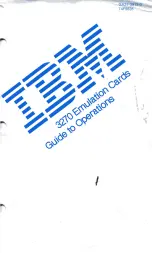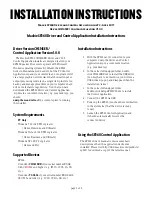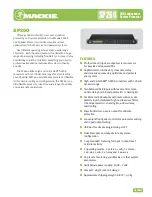
Personal safety:
Always wear suitable personal protective equipment, such as insulating gloves and safety glasses.
Take adequate precautions and install the board preventing accidental touch.
Use protective shields, such as insulating box with interlocks.
1.2
Features
•
Two
16 A - 600 V Hi Tj SCRs in a TO-220 package, used to bypass the inrush resistor
•
Compact solution: 43.6 x 28.5 mm (≈ 1.8 sq in)
•
Compatible with AC-DC converters with or without PFC in all modes: CCM, CRM, and DCM
•
Enable signal (EN = 3.3 V to 15 V) versus GND_DC (DC or PWM signal)
•
Suitable for applications from 50 W up to 1000 W (230 V
RMS
, T
AMB
= 60°C)
•
Compliant with AC or DC input voltage: 90-265 V
AC
, 50/60 Hz, or 120-400 V
DC
•
Robust, immune (2 kV IEC 61000-4-5, 4 kV IEC 61000-4-4)
•
Low EMI noise (EN55014 and EN55022) solution
1.3
Circuit and purpose
The
purpose is to bypass the NTC via the SCRs. The SCR driver consists of a triac and two
diodes.
At system startup, inrush current is limited by the NTC (see
). When the DC capacitor is fully
charged, the MCU turns the SCR driver on to bypass the NTC (see
).
Thanks to the innovative arrangement of the SCR gate driver components, only the positive biased SCR is on.
Therefore:
•
no AC line polarity sensing is required;
•
there is no SCR reverse loss;
•
a single MCU pin can drive both SCRs.
SCRs gate driver Enable pin (EN) can be supplied by a DC, pulsed signal, or PWM signal to reduce consumption.
Both SCRs are more compact than a relay commonly used to bypass NTC.
The
evaluation board is designed and tested for 1 kW power. Higher power applications can
be easily achieved by choosing higher power SCRs and heatsink.
UM2948
Features
UM2948
-
Rev 1
page 3/28




































